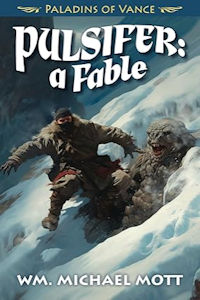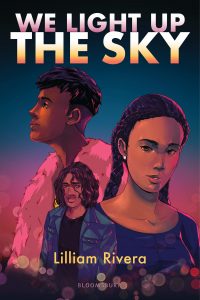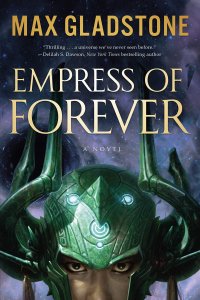Russell Letson Reviews Morphotrophic by Greg Egan
 Morphotrophic, Greg Egan (Greg Egan, 978-1922240-53-8, $25.00, 384 pp, hc) April 2024. Cover by Greg Egan.
Morphotrophic, Greg Egan (Greg Egan, 978-1922240-53-8, $25.00, 384 pp, hc) April 2024. Cover by Greg Egan.
Much of Greg Egan’s work is driven by single, transformative ideas – not the “gimmick” of the gadget story, but something more like Darko Suvin’s idea of a “novum” – often radical reconsiderations or alterations of basic principles of cosmology or psychology or physics that unfold to generate entire worlds, imagining how things might be if they weren’t as they are. (A side note: Suvin’s definition of science fiction is a very close fit to most of Egan’s practice.)
In Morphotrophic, the contrafactual being elaborated has a cellular biology radically different from ours. The book opens with a teenage girl, Marla, awakening to find that her body is deliquescing – much of her left arm and leg have dissolved. As distressing as this is, it is not some unspeakable horror but a medical event (though a serious one) rooted in this world’s primal biology. Complex organisms are composed not of cells but of “cytes,” cell-like entities that have, instead of fixed functions dictated by genes, the ability to take on functions by associating with other cytes in a self-organizing process that builds tissues and organs and eventually entire creatures – morphotypes. Some of Marla’s cytes are, for some reason, deserting her – the metaphors used to describe her condition are drawn from social organization.
In biology lessons, Marla’s teachers had made it sound as if… when the body suffered some catastrophic failure, the cytes would abandon it and seek new homes, like people fleeing a city leveled by an earthquake or a fire. But she couldn’t recall anyone raising the possibility that so many citizens might simply grow disgruntled and leave that an otherwise-thriving metropolis could cease to function.
Marla’s condition is, however, treatable, and her mother and the family doctor manage to stop the process and start regrowth.
That opening chapter is the back-story for one of the novel’s plotlines. The next chapter begins the book’s present action with another viewpoint character, Ruth, who is a “Swapper” taking part in match-ups – part trading session and part competition – in which she exchanges cytes with another person, each hoping to gain some useful trait or benefit from the other’s populations and lineages – improved health and longevity or even immortality. In this match-up, Ruth is hoping to attract cytes from the formidable Zaleh, though individual Swappers are not in full control of the match-up process – “the whole point… was to give the cytes themselves an opportunity to decide” whether to stay or leave a body – they vote with their (metaphorical) feet. Ruth’s exchange with Zaleh ends with her losing consciousness and waking up inside Zaleh – her mind lodged in a body not her own.
Ruth’s and Marla’s viewpoints anchor two gradually converging story lines: Ruth’s strange existence as a guest consciousness inside Zaleh and their eventual alliance and search for a solution to their situation; and the grown-up Marla’s work in cyte research at the Morphotype Institute, where the goal is to understand the mechanisms that govern the way cytes organize themselves into distinct, stable configurations. Marla’s story intersects with that of a third viewpoint character, Institute founder Ada Moss. Ada, more than two centuries old, is a natural Flourisher – one of the rare individuals whose cyte population has remained healthy, stable, and functional for far longer than the usual human lifespan. Her longevity has brought her not only the wealth with which she funds the Institute but a determination to understand the machineries by which cytes operate. Ada’s viewpoint chapters (as distinct from her role in the present action) are flashbacks that trace her socio-economic rise, a century earlier, from housemaid to bootmaker to factory owner – a thread that has more to do with her moral character and values than with the various puzzles generated by the book’s biological idea-set.
There is also a fourth viewpoint/story thread that should remain behind the Spoiler Curtain because it would give away not only the plot points but the gradual unfolding of the idea’s implications and elaborations that Egan carefully measures out. Suspense can be as much about the mysteries of how and why as about whodunnit or the fates of characters, and a large part of the book’s pleasures are in its skillfully managed series of reveals.
The novel’s story lines and genre categories are interestingly complicated. On what might be called the idea side, a set of speculations and puzzles: How does cyte-based biology work? What do its mechanisms imply about organisms built on it? And how will understanding it allow Ruth and Zaleh to regain normal individual lives? Much of “plot” side is built on an intrigue chassis: Who sent Ada the strange video (a pig producing not a piglet but a rat) that led her to found the Institute? Who has planted spies in the Institute – in novel parasitic forms that inhabit the bodies of employees (not unlike Ruth’s involuntary residency in Zaleh)? And eventually there are intersecting story lines devoted to the adventures of those spies, whose physical natures have been transformed by the technologies developed by morphotype researchers – thinking beings who, like Ruth, hope to get back to a normal human bodily condition.
All of this takes place in a world that might as well be our own, filled with the utterly familiar, contemporary furniture of commuter trains and suburbs, of research labs and public-health bureaucracies, of URLs, viral videos, and cellphones, of abandoned refrigerators in back yards. And lurking underneath the science-fictional alternate-biology material and the intrigue/conspiracy-thriller plot machineries are much more fantastic motifs: shapeshifters, werebeasts, vampires, body-horror infestations, talking animals. This is interwoven with what I take to be some of Egan’s most persistent and primal interests: the nature of identity and the importance of cooperation in all things social.
In fact, the whole notion of an animal being a self-organizing collective that somehow votes itself into being strikes me as a metaphor for larger eusocial/cooperative structures. It certainly accounts for much of Ada’s servitude-to-riches back story, which includes her dealings with another Flourisher, an industrialist whose morality is more hard-nosed and self-interested than Ada’s. It especially accounts for the parts of the flashback chapters in which Ada deals with the conflicts and labor unrest in the shoe factory she manages, and her persistent, patient insistence on fairness and rationality and avoidance of coercion – and her support of changing the factory into a worker-owned and -managed collective. Those chapters are not about biology, but they are part of the book’s thematics. As is this brief bit of scene-setting from a sidestream of the main story line, unnecessary for any of the speculative-biology or mystery-solving sides, but harmonizing with Ada’s labor sympathies and general relentless morality:
For some reason everyone was swapping sandwiches and sampling the contents of each other’s flasks, but she wasn’t sure if this was the result of a planned division of labor, intended to give people more variety with less effort, or if it was a spontaneous outbreak of sharing that had started with one trade and then escalated.
In the Acknowledgements, Egan traces his interest in the biological speculations that inform the book and his debt to the technical papers that were a “source of inspiration” for the mechanisms he devised. But there is much more going on in Morphotropic than alternate biology or shape-shifting or the ethics of research – I kept hearing echoes from across his whole body of work, and the two resolution chapters brought them home in ways that must remain behind that pesky Spoiler Curtain. I invite readers to make the journey and see for themselves.
Russell Letson, Contributing Editor, is a not-quite-retired freelance writer living in St. Cloud MN. He has been loitering around the SF world since childhood and been writing about it since his long-ago grad school days. In between, he published a good bit of business-technology and music journalism. He is still working on a book about Hawaiian slack key guitar.
This review and more like it in the July 2024 issue of Locus.
 While you are here, please take a moment to support Locus with a one-time or recurring donation. We rely on reader donations to keep the magazine and site going, and would like to keep the site paywall free, but WE NEED YOUR FINANCIAL SUPPORT to continue quality coverage of the science fiction and fantasy field.
While you are here, please take a moment to support Locus with a one-time or recurring donation. We rely on reader donations to keep the magazine and site going, and would like to keep the site paywall free, but WE NEED YOUR FINANCIAL SUPPORT to continue quality coverage of the science fiction and fantasy field.
©Locus Magazine. Copyrighted material may not be republished without permission of LSFF.






